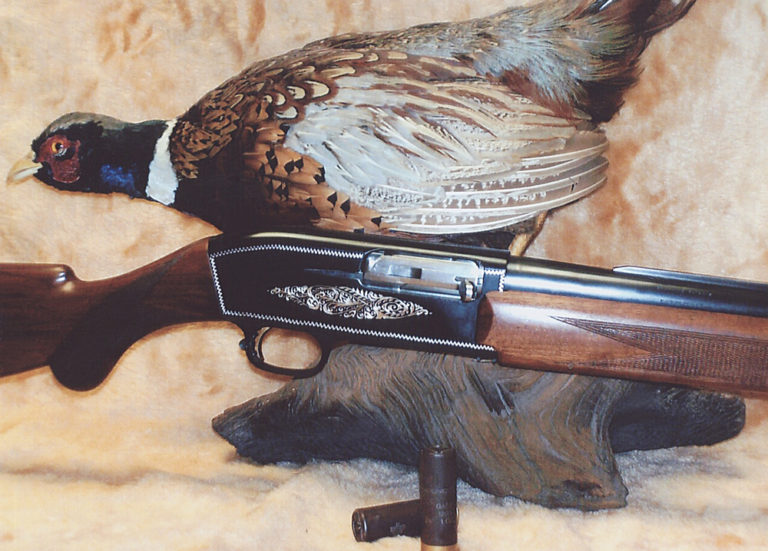
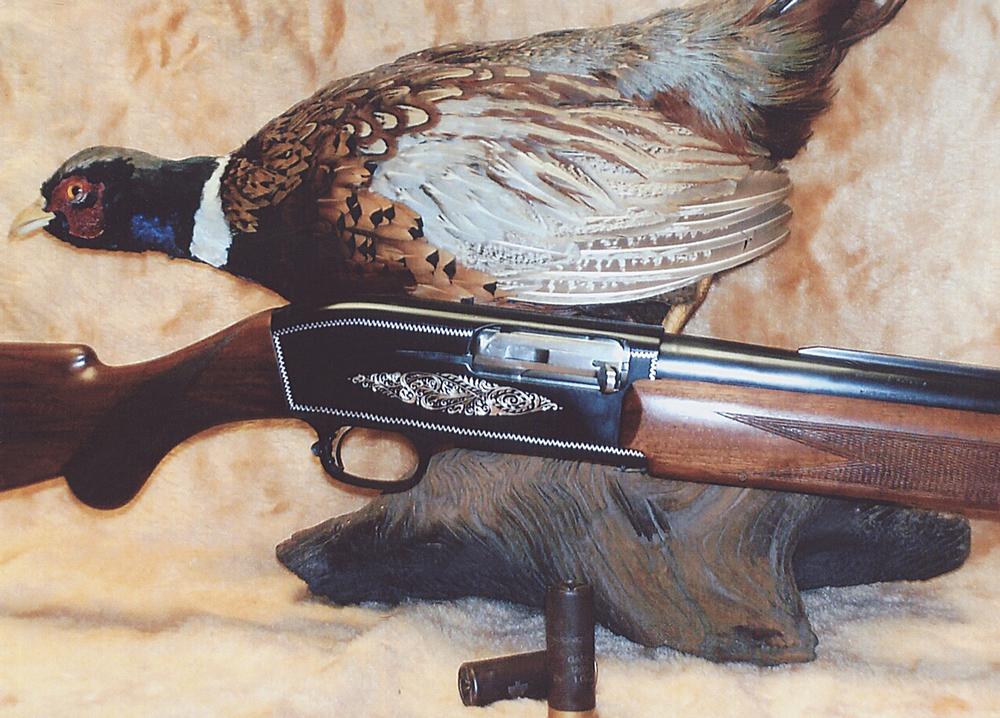
If an average shotgunner were asked to conjure up in his mind’s eye a scene depicting an upland hunter, no doubt that hunter would be armed with either a side-by-side or an over/under shotgun. For the past half-century or so, we have been conditioned to think that an upland gunner should be armed with a two-barreled gun. Repeaters are permissible in the wetlands when shooting waterfowl, but for upland game, double guns are what we believe are best suited. But despite all the articles and advertising about double guns, if an accurate survey were conducted, the results would show that more upland game is shot with repeaters than with doubles.
It used to be that the vast majority of repeaters found in the field were pump guns. However, in the last couple of decades, the autoloader has gained considerably on the pump gun in popularity. Today it is possible to find an autoloader that is priced a few bucks less than some of the pump guns. Although the most popular and best-selling shotgun in North America is still the pump gun, the autoloader is not far behind, certainly ahead of the over-under and the side-by-side.
Interestingly, shortly after the introduction of the first successful autoloading shotguns in America, the Belgian Browning and the similar Remington Model 11, the autoloader outsold all other shotguns six to one in the northeast and about four to one in the rest of the country. However, with the appearance of increasing number of less-expensive pump guns, the pump gained on the autoloader, while the double continued to slide.
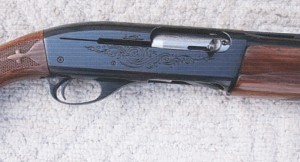
There is no denying that a good double gun is truly a delight in the field. In the uplands where hunters log more miles than shots, a light, fast handling shotgun is what is needed. A quality side-by-side or an over/under, especially one that is made in the smaller gauges, tends to be light, fast-handling, and easy to carry. But please note that the key is a quality double, which translates to more money! A cheap, poorly constructed double gun is just that: a cheap, poorly constructed gun. It is far better to get a quality autoloader than to settle for a cheap double. But “just any autoloader” will not necessarily be a better choice. Most autoloaders, especially those made in this country, are better suited for ducks than upland gunning.
A typical 12-gauge 7-1/2-pound muzzle-heavy autoloader does not make for an ideal upland gun. Probably more upland game has been shot in the last 40 years in America with a 12-gauge Remington Model 1100 than with any other autoloader. Prior to that, it was the Browning A-5 and Remington 11 and 11-48. However, they were used in the uplands more often than not, because they were the only shotguns available to the hunter, not because the gun was selected specifically for upland gunning. If any of these guns was selected for upland gunning, it was usually chambered in one of the smaller bore sizes.
Ideally, for upland gunning an autoloader (or any other gun for that matter!) should be fairly light and have a balance that tends to be light up front. The arbitrary weight limit should be no more than 7-1/4 pounds, preferably closer to 7 or under, regardless of gauge. This eliminates some autoloaders, but at the same time, still provides adequate choice to upland hunters. Among modern gas operated autoloaders, the Beretta comes to mind in its various models. Going back to the earlier Models 302 and 303 to current models, Berettas always tend to be light, averaging around 7 pounds with a 26-inch barrel in 12 gauge. They are not exactly barrel light, but they are light overall and handle very well in the uplands. The latest Beretta, A400 XPLOR, is about as light a 12 gauge autoloader you will find today. It is listed at 6.6 pounds!
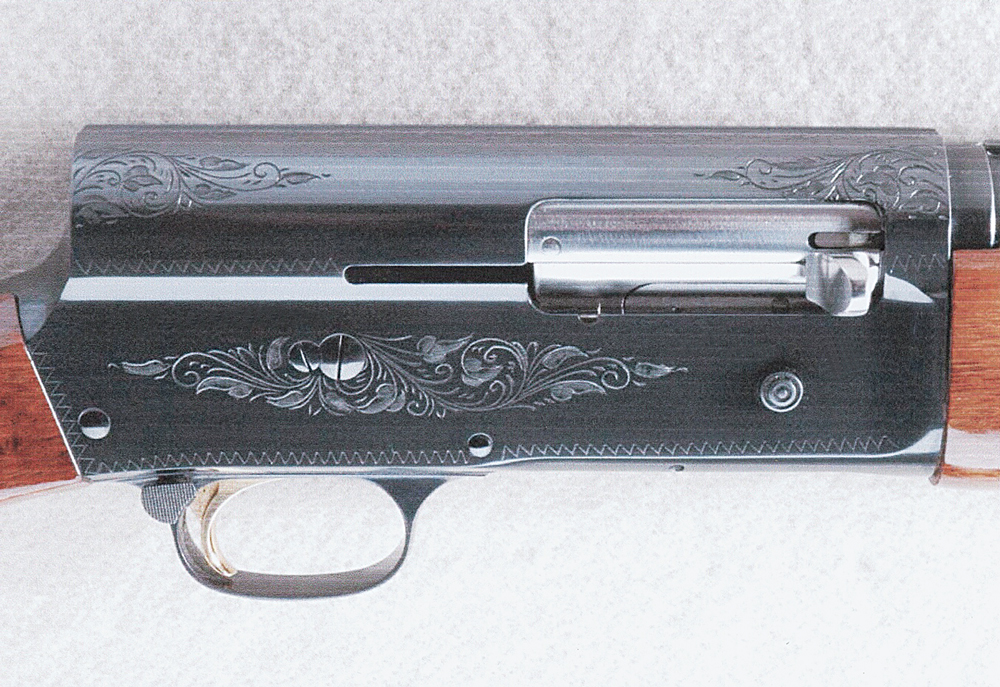
Benelli, of course, leads the field in light autoloaders. Whether it is the Montefeltro, the M1 or M2, they are all not just light, but balance right with muzzle lightness. The Benelli Montefeltro, M1 and M2 weigh 7 pounds or less and the Ultra Light model weighs closer to 6 pounds. There are other makes that you might find, but the bottom line is to find one that is not just light, but is barrel light. Browning’s Maxus, although built for waterfowling with its 3-1/2 inch chamber and camouflage finish, can still be a very effective upland gun. It is surprisingly light and handles very well.
Among older autoloaders, there were quite a few that were very good if not superb for upland gunning. The old Browning Double Auto was originally designed for boxed pigeon shooting and balances like a double gun. The “Twentyweight” model weighs around 6-1/2 pounds and the “Twelvette” closer to 7 pounds. Both are superb upland guns. There is also the old Winchester Model 59 with its revolutionary fiberglass-wrapped barrel that weighed 6-1/2 pounds in 12 gauge. The Winchester was revolutionary not only because of its unusual barrel, but also because it was the first American made shotgun with screw-in choke tubes. The Franchi 48AL could weigh as little as 6-1/4 pounds in 12 gauge with a plain, short barrel. Perhaps the lightest of all was the futuristic Armalite AR-17 or the “Golden Gun” as it was called. The Armalite was made in 12 gauge only, and like the Browning Double Auto, it was a two-shooter and operated on the short recoil system.
The Armalite tipped the scale at a wispy 5-1/2 pounds in 12 gauge! There were other imported autoloaders that were pretty light in 12 gauge. In the 1950s and 60s there was the Breda, a unique, exceptionally well-made long recoil-operated autoloader. The Breda normally weighed around 7 pounds in 12 gauge but could be had in the Superlight model that weighed 6-3/4 pounds. So there has never been a shortage of light, properly balanced autoloaders for the uplands.
In 16 gauge, the Browning Sweet Sixteen in the old A-5 configuration – and its licensed Remington and Savage humpback knockoffs – is just about all that was and is available. However, it is possible to locate an old Remington 11-48 16 with a receiver that was “shaved” to better suit the smaller gauge. Savage did make a rather bulbous-looking Model 775, a lightened version of the odel 755 that weighed around 7 pounds, but it was an ugly gun and did not sell well. Whatever the case may be, in the older models it is best to avoid ventilated ribbed barrels for upland gunning. Not only does the ventilated rib contribute significantly to overall gun weight (about a quarter of a pound) but it adds weight in a crucial area, up front.
A Browning Sweet Sixteen with a plain 26-inch barrel averages 6-3/4 pounds and handles beautifully. With a ventilated rib, the weight can increase to over 7 pounds. A 7 pound gun should be a 12, not a 16, if it is to be used in the uplands.

The same thing can be said about the Remington 11-48. With a short plain barrel, the Remington could weigh as little as 6-1/2 pounds, while with a ventilated rib it tends to be closer to 7. The legendary Remington 1100 did come in 16, but as good as the 1100 is for a variety of shotgunning, it is not the best gun for the uplands in 12 or 16 gauges. Besides being somewhat heavy, it was always a bit nose-heavy, not the best thing for an upland gun. Yet, because it points so well, it has served as an upland gun for many a successful upland hunter.
In the 1980s Remington attempted to correct the nose-heavy tendency of the 1100 for the uplands and came out with their Special Field models with 21-inch barrels. But these guns, although lighter with their short barrels and shortened magazines, did not have a very good balance. Merely chopping the barrel shorter, as most manufacturers are prone to do, does not make an “upland” gun, it just makes it a shorter gun! Although there are upland gunners who swear by the Remington Special Field”models with their stubby barrels, they are not ideally suited and tend to have poor balance. The current Remington “contour” barrels are a much better solution, and the new Model 105 CTI made of lightweight materials makes for a dandy upland autoloader at around 7 pounds in 12 gauge.
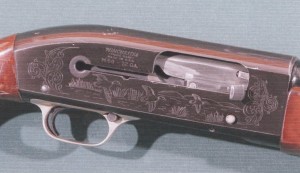
In 20 gauge, the picture changes somewhat and even the nose-heavy Remington 1100 Lightweight 20 can make a good upland gun. Just about all the 20 gauge autoloaders are suitable for upland gunning provided that they are properly choked. Some are, of course, better suited for upland gunning than others. Perhaps the best way to separate the 20 gauges is by using three categories. The first category is “standard models” and includes those weighing between 6-1/2 and 7 pounds such as the Remington 1100 LT 20, Browning Gold, etc. These guns make good upland guns if they are choked properly.
The second category, the “lightweights” includes 20 gauge autoloaders such as the Berettas and Benellis, and even the old Browning A-5 “Twenty” (commonly referred to as “Light Twenty”) and the earlier-mentioned Breda. These are 20 gauges that all weigh somewhere between a few ounces under 6 pounds and 6-1/2 pounds. They are all balanced right for the uplands and their light overall weight makes them ideal for carrying over hill and dale.
The third category can be termed as “ultralight” autoloaders. Currently there are only two that qualify as ultralights. Although there are Benelli M-1s, M-2s and Montefeltros that dip under 6 pounds, to qualify as an ultralight the gun has to weigh closer to 5-1/2 pounds in 20 gauge.
The Benelli Ultra Light model in 20 gauge is claimed to weigh 5 pounds, 2 ounces. It is indeed a feathery, delightful autoloader, but not quite as light as claimed. Benelli achieved lighter weight by using a shorter magazine tube, shorter barrel, and a carbon fiber ventilated rib. But despite its shorter barrel, it balances very well because its receiver is longer by about an inch than the average autoloader’s, and the barrel is not seated as deeply, giving it another inch of length. Therefore, the Benelli with a 24-inch barrel is of same overall length as a Browning A-5 with a 26-inch barrel.
A sleeper in this group of ultralight autoloaders is the Franchi 48AL. The Franchi was always considered to be the lightest autoloader one could get. It used to be advertised as the world’s lightest autoloader and I suppose that is still true today.
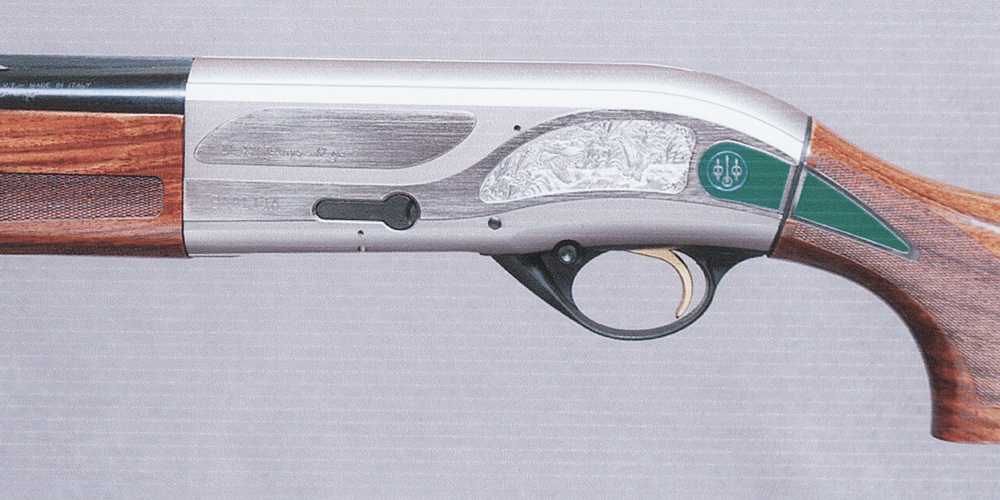
The Benelli Ultra Light is indeed very light, but it is a few ounces heavier than the Franchi. The Franchi has excellent balance combined with feathery weight. A typical Franchi 48AL 20-gauge (the earlier model without screw-in chokes) with 26-inch ventilated rib barrel weighs 5 pounds, 4 ounces. With shorter barrel (Franchi made 24-inch barrels) it would weigh-in at the advertised 5 pounds 2 ounces. Today’s guns, because of the screw-in chokes, tend to weigh a few ounces more, although they are still feathery. The Benelli Ultra Light 20 gauge with 24-inch barrel averages around 5 pounds, 6 ounces, which is 4 ounces more than the advertised 5 pounds, 2 ounces. Perhaps Benelli’s advertising claims are a bit overly optimistic. Still, at less than 5-1/2 pounds, it is plenty light!
In 28 gauge, there is the Remington 1100 and the Franchi 48AL. The Remington tends to be heavier, but it still makes for an excellent upland gun, as does the discontinued Remington, 11-48 which is lighter than the 1100. The Franchi is one of the lightest 28 gauge autoloaders on the market today. It is built on the 20 gauge receiver and weighs about the same as the 20. It's a wonderful upland gun with an average weight of around 5-1/2 pounds. There’s also the now-defunct Charles Daly import, a gas-operated gun that appears to be pretty good, but the gun has not been around long enough to provide adequate assessment.
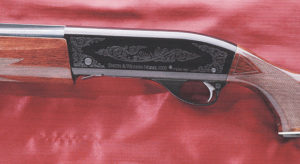
The latest addition in 28 gauge comes from Benelli. It is a scaled-receiver Legacy Model that weighs 5 pounds. There haven’t been enough of these Benellis in the field yet for them to have built a reputation. They seem to be great little autoloaders, but they are pricey. Benelli would have been better served putting out a Montefeltro or M2 model in 28 gauge rather than the more expensive, engraved Legacy model.
There are those who use the .410 on upland game. However, it should be confined to use on the smaller game birds such as quail and dove and not the larger birds. I know, many a game farm pheasant has been shot with a .410, but a game farm bird is a totally different animal from the tough wild ringneck. Also, shots should be kept to closer distances. For most gunners, 30 yards would be about the maximum distance that they should attempt to use the .410. There just aren’t enough shot pellets in the skinny little hull.
When it comes to the .410 autoloader, there is currently only the Remington 1100. It makes for a fine skeet gun as well as small bird shotgun, although it is a bit hefty at over 6-1/2 pounds. The older Model 11-48 is about a half a pound lighter but is extremely scarce on the used-gun market.
There are a number of inexpensive double guns on the market today that cost less than the pricier autoloaders. But as the old saying goes, “you get what you pay for.” The inexpensive doubles may very well be durable, but you can rest assured that they will more than likely be crudely finished or with a lot of glitz to cover up poor workmanship. Balance and handling qualities will not be something you will find in these cheaper doubles. It is far better to spend your money on a quality autoloader than on an inexpensive double gun.
This article appeared in the 2012 Edition of the Gun Digest book.

Next Step: Get your FREE Printable Target Pack
Enhance your shooting precision with our 62 MOA Targets, perfect for rifles and handguns. Crafted in collaboration with Storm Tactical for accuracy and versatility.
Subscribe to the Gun Digest email newsletter and get your downloadable target pack sent straight to your inbox. Stay updated with the latest firearms info in the industry.

![Best Concealed Carry Guns In 2025 [Field Tested] Wilson Combat EDC X9S 1](https://gundigest.com/wp-content/uploads/Wilson-Combat-EDC-X9S-1-324x160.jpg)


![Best 9mm Carbine: Affordable PCCs [Tested] Ruger Carbine Shooting](https://gundigest.com/wp-content/uploads/Ruger-Carbine-Shooting-100x70.jpg)
![Best AR-15: Top Options Available Today [Field Tested] Harrington and Richardson PSA XM177E2 feature](https://gundigest.com/wp-content/uploads/Harrington-and-Richardson-PSA-XM177E2-feature-100x70.jpg)
